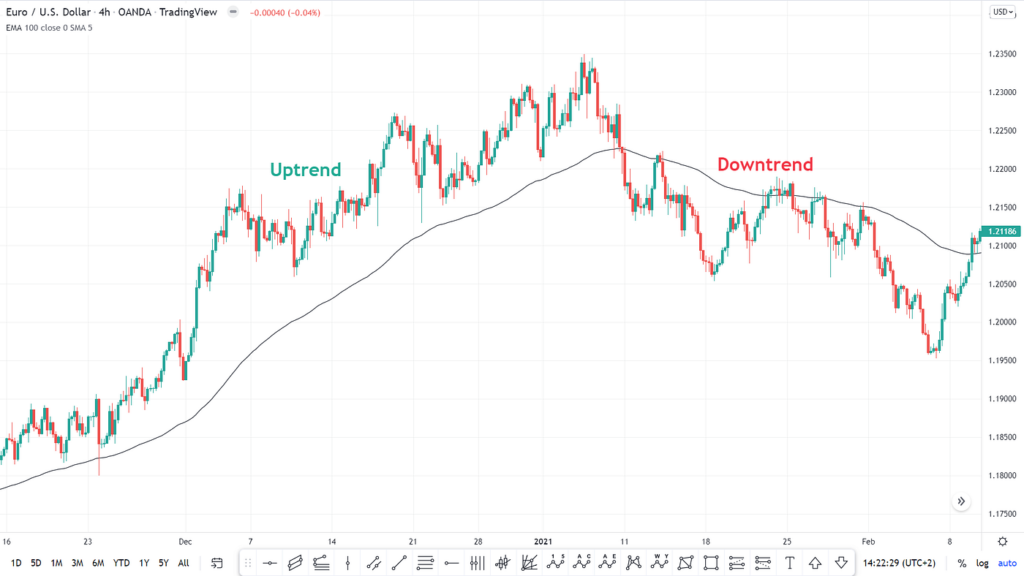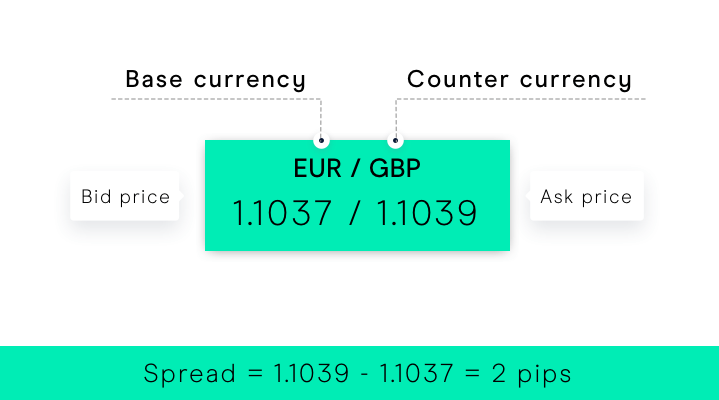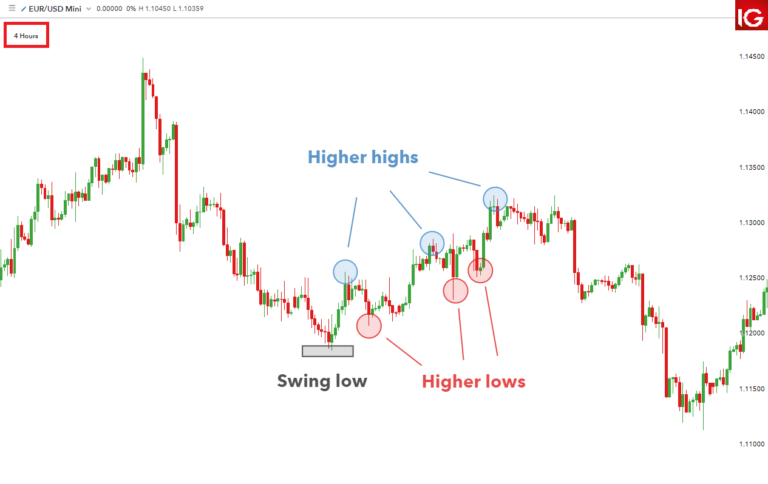Introduction
In the vast world of forex trading, traders rely on various tools and strategies to make informed decisions and maximize profits. Among these tools, forex trading indicators stand out as essential components of a trader’s arsenal. These indicators offer valuable insights into market trends, potential price movements, and entry or exit points for trades. Understanding the significance of indicators and how to effectively incorporate them into your trading strategy is crucial for success in the forex market.
What are Forex Trading Indicators?
Forex trading indicators are statistical tools that help traders analyze market data, identify patterns, and predict future price movements. These indicators are typically based on mathematical calculations applied to historical price and volume data. By interpreting the signals generated by these indicators, traders can make informed decisions about when to buy or sell currencies.
There is a wide variety of forex trading indicators available, each serving a specific purpose and catering to different trading styles. Some indicators focus on trend analysis, while others highlight momentum, volatility, or market sentiment. Regardless of their specific function, these indicators are designed to provide traders with valuable insights into market dynamics.
Forex trading indicators encompass a diverse range of statistical tools utilized by traders to dissect market data, recognize recurring patterns, and anticipate forthcoming price movements within the foreign exchange (forex) market. These indicators rely on mathematical calculations derived from historical price and volume data to furnish traders with actionable insights into currency pair dynamics. By deciphering the signals generated by these indicators, traders can formulate informed decisions regarding the optimal timing for executing buy or sell orders.
The extensive array of forex trading indicators available caters to the diverse needs and preferences of traders, encompassing a broad spectrum of trading styles and objectives. While some indicators focus on trend analysis, others are designed to elucidate momentum, gauge volatility, or assess prevailing market sentiment. Despite their varying functionalities, the overarching objective of these indicators remains consistent: to furnish traders with invaluable perspectives into market dynamics, thereby enhancing their ability to navigate the forex market effectively.
At their core, forex trading indicators serve as indispensable tools for traders seeking to gain a deeper understanding of market behavior and identify opportune moments for capitalizing on potential trading opportunities. Whether employed by novice traders or seasoned professionals, these indicators empower market participants to navigate the complexities of the forex market with greater confidence and precision.
As such, mastering the utilization of forex trading indicators is essential for traders looking to achieve sustained success and profitability in their trading endeavors.
The Importance of Using Indicators in Forex Trading
The forex market is known for its complexity and volatility, making it challenging for traders to navigate without the right tools. Forex trading indicators offer a structured approach to analyzing market conditions and making trading decisions based on objective criteria rather than emotions or intuition.
One of the key benefits of using indicators is their ability to filter out noise and identify significant market trends. By applying technical analysis techniques, traders can spot patterns and signals that may not be apparent from raw price data alone. This allows them to capitalize on opportunities and avoid potential pitfalls in the market.
Moreover, forex trading indicators provide traders with a framework for developing and testing trading strategies. By backtesting various indicators and combinations thereof, traders can assess their effectiveness in different market conditions and refine their approach accordingly. This empirical approach to trading can help traders achieve consistency and improve their overall performance over time.
The forex market is a dynamic and highly competitive arena where traders aim to capitalize on price movements of various currency pairs. However, navigating this complex environment can be challenging, especially without the right tools and strategies. This is where forex trading indicators play a crucial role, offering traders valuable insights and analysis to make informed decisions in the midst of market volatility.
- Structured Analysis:
Forex trading indicators provide traders with a structured approach to analyzing market conditions. Instead of relying solely on intuition or emotional impulses, traders can use indicators to objectively evaluate price movements and identify potential trading opportunities. This structured analysis helps traders avoid impulsive decisions and ensures a disciplined approach to trading. - Filtering Market Noise:
The forex market is characterized by a constant influx of information and price fluctuations, often resulting in market noise that can obscure meaningful trends. Indicators help filter out this noise, allowing traders to focus on significant market movements and underlying patterns. By distinguishing between noise and genuine signals, traders can make more accurate predictions about future price movements and adjust their strategies accordingly. - Spotting Trends and Signals:
One of the primary benefits of using indicators is their ability to identify trends and signals that may not be immediately apparent from raw price data alone. Through technical analysis techniques, traders can detect patterns such as moving averages crossovers, overbought or oversold conditions, and trend reversals. By recognizing these signals, traders can enter or exit trades at opportune moments, maximizing their profit potential and minimizing losses. - Developing and Testing Strategies:
Forex trading indicators serve as a foundation for developing and testing trading strategies. Traders can backtest various indicators and combinations thereof to assess their effectiveness in different market conditions. This empirical approach allows traders to refine their strategies based on historical data, identifying patterns of success and areas for improvement. By continuously testing and optimizing their strategies, traders can achieve greater consistency and improve their overall performance over time. - Objective Decision-Making:
Perhaps most importantly, forex trading indicators facilitate objective decision-making in a market that is often driven by emotions and speculation. By relying on quantitative data and statistical analysis, traders can remove biases and emotions from their trading process, leading to more rational and disciplined decision-making. This objectivity is essential for maintaining consistency and avoiding costly mistakes in the fast-paced world of forex trading.
In conclusion, forex trading indicators play a vital role in helping traders navigate the complexities of the forex market. By providing structured analysis, filtering market noise, spotting trends and signals, facilitating strategy development, and promoting objective decision-making, indicators empower traders to make informed choices and achieve success in their trading endeavors. Whether you’re a novice trader or an experienced investor, incorporating indicators into your trading arsenal can significantly enhance your ability to thrive in the dynamic and ever-changing world of forex trading.
Top 10 Forex Trading Indicators
Moving Averages: Moving averages are among the most widely used indicators in forex trading. They smooth out price data to identify trends and potential reversal points. Common types of moving averages include simple moving averages (SMA) and exponential moving averages (EMA).
Moving averages are fundamental indicators used in forex trading to smooth out price data, making it easier to identify trends and potential reversal points. They are based on averaging historical prices over a specific period, providing traders with a clearer picture of the market direction. There are two common types of moving averages: Simple Moving Averages (SMA) and Exponential Moving Averages (EMA).
- Simple Moving Average (SMA): The SMA calculates the average price of a currency pair over a defined period, giving equal weight to each data point in the calculation. This makes the SMA more sensitive to recent price movements, but it may also lag behind sudden changes in the market.
- Exponential Moving Average (EMA): The EMA gives more weight to recent price data, resulting in a faster response to changes in market trends compared to the SMA. Traders often use EMAs for short-term analysis or when they require more responsiveness to current market conditions.
Relative Strength Index (RSI): The RSI is a momentum oscillator that measures the speed and change of price movements. It oscillates between 0 and 100 and is used to identify overbought or oversold conditions in the market. The Relative Strength Index (RSI) is a momentum oscillator that measures the speed and change of price movements.
It oscillates between 0 and 100 and is used to identify overbought or oversold conditions in the market. The RSI is calculated based on the ratio of upward and downward price movements over a specified period, typically 14 periods.
Bollinger Bands: Bollinger Bands consist of a simple moving average (SMA) and two standard deviation bands above and below the SMA. These bands expand and contract based on market volatility, providing insights into potential price breakouts or reversals.
Bollinger Bands are comprised of a Simple Moving Average (SMA) and two standard deviation bands above and below the SMA. These bands expand and contract based on market volatility, providing insights into potential price breakouts or reversals. When the price moves close to the upper band, it may indicate overbought conditions, while prices near the lower band may suggest oversold conditions.
MACD (Moving Average Convergence Divergence): The MACD is a trend-following momentum indicator that consists of two lines – the MACD line and the signal line. Traders use the crossover of these lines to identify changes in trend momentum.
The MACD is a trend-following momentum indicator that consists of two lines: the MACD line and the signal line. Traders use the crossover of these lines to identify changes in trend momentum. Additionally, the MACD histogram, derived from the difference between the MACD line and the signal line, provides further insights into the strength of a trend.
Fibonacci Retracement: Fibonacci retracement levels are based on the Fibonacci sequence and are used to identify potential support and resistance levels in the market. Traders often use these levels to determine entry and exit points for trades.
Fibonacci retracement levels are based on the Fibonacci sequence and are used to identify potential support and resistance levels in the market. Traders often use these levels to determine entry and exit points for trades. Fibonacci retracement levels commonly used include 23.6%, 38.2%, 50%, 61.8%, and 100%.
Stochastic Oscillator: The stochastic oscillator is a momentum indicator that compares the closing price of a currency pair to its price range over a certain period. It helps traders identify overbought or oversold conditions and potential trend reversals.
The stochastic oscillator is a momentum indicator that compares the closing price of a currency pair to its price range over a certain period. It helps traders identify overbought or oversold conditions and potential trend reversals. The stochastic oscillator consists of two lines, %K and %D, which oscillate between 0 and 100.
Ichimoku Cloud: The Ichimoku Cloud is a comprehensive indicator that provides insights into trend direction, momentum, and support/resistance levels. It consists of several components, including the Kumo (cloud), Tenkan-sen, and Kijun-sen lines.
The Ichimoku Cloud is a comprehensive indicator that provides insights into trend direction, momentum, and support/resistance levels. It consists of several components, including the Kumo (cloud), Tenkan-sen, and Kijun-sen lines. Traders use the Ichimoku Cloud to identify trend reversals and gauge market sentiment.
Average True Range (ATR): The ATR indicator measures market volatility by analyzing the range between high and low prices over a specified period. Traders use ATR to set stop-loss levels and assess potential price targets.
The ATR indicator measures market volatility by analyzing the range between high and low prices over a specified period. Traders use ATR to set stop-loss levels and assess potential price targets. A higher ATR value indicates higher volatility, while a lower value suggests lower volatility.
Volume: Volume indicators measure the trading activity of a currency pair over a given period. High volume often accompanies significant price movements, indicating strong market participation and potential trend continuation.
Volume indicators measure the trading activity of a currency pair over a given period. High volume often accompanies significant price movements, indicating strong market participation and potential trend continuation. Volume analysis helps traders confirm the validity of price movements and identify trends.
Parabolic SAR (Stop and Reverse): The Parabolic SAR indicator helps traders identify potential trend reversals. It places dots above or below price candles, indicating potential buy or sell signals, respectively.
The Parabolic SAR indicator helps traders identify potential trend reversals. It places dots above or below price candles, indicating potential buy or sell signals, respectively. When the dots switch positions, it signals a reversal in the current trend, prompting traders to adjust their positions accordingly.
Incorporating these diverse forex trading indicators into your trading strategy can provide valuable insights and help you make more informed decisions in the dynamic forex market. However, it’s essential to understand each indicator’s strengths, weaknesses, and limitations and to use them in conjunction with other forms of analysis for optimal results. Experimenting with different combinations of indicators and adjusting your approach based on market conditions can further enhance your trading effectiveness and overall success.
Conclusion: Incorporating Indicators into Your Forex Trading Strategy
Incorporating forex trading indicators into your trading strategy can significantly enhance your ability to analyze market trends and make informed decisions. However, it’s essential to remember that no single indicator can guarantee success in the forex market. Traders should use indicators as part of a comprehensive trading plan that includes risk management, money management, and ongoing evaluation of market conditions.
Moreover, traders should avoid over-reliance on indicators and exercise discretion when interpreting signals. While indicators provide valuable insights, they are not foolproof and can sometimes generate false signals. Therefore, it’s crucial to combine indicator analysis with other forms of technical and fundamental analysis to validate trading decisions.
Ultimately, mastering the use of forex trading indicators requires practice, patience, and a willingness to continually refine your approach. By incorporating indicators into your trading strategy and adapting to changing market conditions, you can improve your chances of success and achieve your trading goals in the dynamic world of forex trading.
Read our latest article on Retracement
FAQs
1. What are forex trading indicators, and how do they assist traders? Forex trading indicators are statistical tools used to analyze market data, identify patterns, and predict future price movements. They help traders make informed decisions about when to buy or sell currencies by interpreting signals generated from historical price and volume data.
2. What types of calculations do forex trading indicators rely on? Forex trading indicators typically rely on mathematical calculations applied to historical price and volume data to derive insights into market dynamics.
3. What is the primary purpose of using forex trading indicators? The primary purpose of using forex trading indicators is to provide traders with valuable insights into market behavior, enabling them to make informed decisions and capitalize on trading opportunities.
4. How do forex trading indicators cater to different trading styles? Forex trading indicators come in a wide variety, with each serving a specific purpose and catering to different trading styles. Some indicators focus on trend analysis, while others highlight momentum, volatility, or market sentiment.
5. What is the significance of trend analysis in forex trading? Trend analysis is crucial in forex trading as it helps traders identify the direction of price movements and potential entry or exit points for trades. Indicators that focus on trend analysis assist traders in recognizing and capitalizing on prevailing market trends.
6. How do forex trading indicators help traders manage risk? Forex trading indicators assist traders in managing risk by providing insights into potential price movements and identifying optimal stop-loss levels. By incorporating indicators into their trading strategy, traders can implement risk management measures more effectively.
7. Can forex trading indicators help traders improve their trading performance over time? Yes, forex trading indicators can help traders improve their trading performance over time by providing a structured framework for analyzing market conditions and refining trading strategies through backtesting and optimization.
8. What role do emotions play in forex trading, and how do indicators help mitigate them? Emotions can cloud judgment and lead to irrational decision-making in forex trading. Indicators help mitigate emotions by providing objective criteria for making trading decisions, thereby promoting disciplined and rational behavior.
9. How do traders use volume indicators in forex trading? Volume indicators measure the trading activity of a currency pair over a given period. High volume often accompanies significant price movements, indicating strong market participation and potential trend continuation. Traders use volume analysis to confirm the validity of price movements and identify trends.
10. What is the importance of continuous learning and adaptation when using forex trading indicators? Continuous learning and adaptation are crucial when using forex trading indicators as market conditions are dynamic and constantly evolving. Traders must stay updated with changes in market dynamics and adjust their strategies accordingly to remain competitive and achieve sustained success.
Click here to read more on FX Indicators





